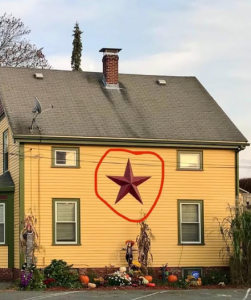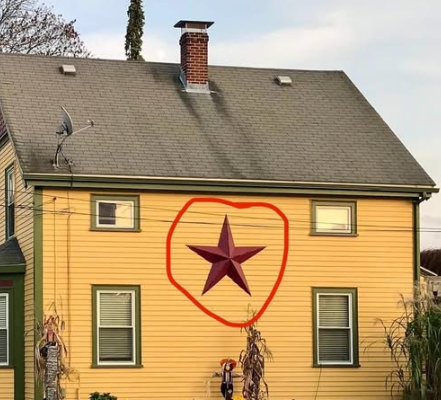The True Meaning Behind Barn Stars
If you’ve ever driven through the American countryside, especially in states like Pennsylvania, Ohio, or parts of the Midwest, you’ve likely seen them: large, decorative stars fixed proudly on the sides of barns, homes, and outbuildings. These “barn stars,” often crafted from metal or painted directly onto wood, are striking symbols that spark curiosity. What do they mean? Are they purely decorative, or do they carry a deeper message passed down through generations?
The answer lies in a fascinating mix of history, tradition, and symbolism. While barn stars may appear today as simple rustic decorations, their roots stretch back to European settlers and their cultural practices, blending spiritual beliefs, agricultural hopes, and artistic expression.
Origins of the Barn Star
Barn stars trace their beginnings to the mid-18th and 19th centuries, primarily among German immigrants who settled in Pennsylvania, often referred to as the Pennsylvania Dutch (from the word “Deutsch,” meaning German). These settlers brought with them Old World folk traditions, many of which involved symbolism, geometric patterns, and the belief that certain designs could bring good fortune, ward off evil, or protect a household from misfortune.
At first, the decorations weren’t stars at all. Many barns featured painted hex signs or geometric patterns that carried symbolic meanings—circles for eternity, tulips for faith, and birds for fertility or good luck. Over time, one particular shape began to stand out: the five-pointed star.
By the late 1800s, barn stars became popular across Pennsylvania and beyond. Some were painted directly onto barns, while others were crafted from wood or metal and affixed to the exterior. Farmers saw them as more than ornaments—they were visual prayers for prosperity, harvest success, and protection from harm.
The Symbolism of the Star
The star, as a symbol, carries weight across cultures and centuries. To the early settlers, the five-point star often represented protection and guidance, echoing the imagery of the North Star, which travelers used for navigation. It symbolized a fixed point in the heavens—something reliable and trustworthy in uncertain times.
Some farmers believed that barn stars could ward off evil spirits or bring balance and harmony to their farms. Others saw them as signs of pride and craftsmanship, a way of declaring, “This is our home, our land, and we care for it.”
In many cases, the star was less mystical and more practical. It acted as a kind of signature or brand. Much like a logo today, different families or builders might favor unique colors, shapes, or patterns, making the star a recognizable mark of ownership or identity.
Colors and Their Meanings
Over time, meanings were assigned not just to the shape of the star but also to its colors. Though these interpretations weren’t always universal, many rural communities embraced the idea that each color carried symbolic weight:
-
Black: Protection, warding off evil, or mourning.
-
Blue: Peace, calm, and spirituality.
-
Green: Growth, fertility, and abundance in crops.
-
Red: Strength, emotion, and passion for life.
-
White: Purity and hope.
-
Yellow or Gold: Health, wealth, and love of family.
When you spot a star on a barn painted a certain color, it might be more than an aesthetic choice—it could reflect the values or hopes of the family who placed it there.
Barn Stars vs. Hex Signs
One common misconception is that barn stars and hex signs are the same thing. While they share roots in Pennsylvania Dutch culture, they differ in purpose and design.
-
Hex signs are usually round, brightly painted, and feature intricate folk art patterns such as tulips, hearts, or birds. They are often thought of as “good luck charms.”
-
Barn stars are typically simpler, often just five- or six-point stars, either painted or constructed from tin, wood, or metal. Their role is less ornamental art and more symbolic representation.
That said, both grew out of the same tradition of blending art, faith, and superstition with rural life.
The Evolution Into Decoration
By the 20th century, barn stars began to lose much of their superstitious or symbolic weight. As farming modernized, the stars transformed into decorative folk art, celebrated more for their rustic charm than for their meaning. They spread from Pennsylvania into other rural areas, particularly the Midwest, and became an iconic feature of Americana.
Today, barn stars are a common sight not only on barns but also on houses, garden sheds, fences, and even in suburban living rooms. Many people hang them purely for their vintage farmhouse aesthetic. However, even if they don’t consciously carry the old symbolism, the stars still project a sense of tradition, heritage, and warmth.
Modern Interpretations
In contemporary design, barn stars are often called “Amish stars” or “primitive stars.” They’ve become staples of farmhouse décor, sold in home goods stores, online shops, and antique markets. Some people still associate them with good fortune and protection, while others simply see them as reminders of rural simplicity and hard work.
Interestingly, many homeowners who display barn stars today may not realize the depth of meaning behind them. For some, it’s just a design choice. For others, it’s a way to stay connected to family heritage, especially if their ancestors were Pennsylvania Dutch. And for many, the star is a comforting reminder of stability in a fast-changing world.
Why Barn Stars Still Matter
The endurance of the barn star is a testament to how symbols can evolve yet remain powerful. Even stripped of superstition, the star continues to resonate. It stands for:
-
Pride in one’s home or land – just as early farmers intended.
-
A connection to tradition – honoring the history of those who built and worked the land before us.
-
Simplicity and beauty – reminding us that even in utilitarian spaces like barns, people found ways to express artistry and meaning.
In a way, the barn star mirrors the American story: a blend of immigrant traditions, spiritual beliefs, practicality, and creativity, all woven together into something uniquely enduring.
Conclusion
Barn stars are far more than quaint country decorations. They are symbols layered with history—rooted in Pennsylvania Dutch tradition, connected to ideas of protection, prosperity, and pride. While their meanings have shifted over the centuries, their presence on barns, homes, and in modern décor reveals a continuing human desire to express identity, hope, and connection to something larger than ourselves.
So, the next time you drive past a barn adorned with a bold star, remember: it isn’t just there to look pretty. It’s a piece of living history, a silent message from the past, and a reminder of how symbols endure even as the world around them changes.


